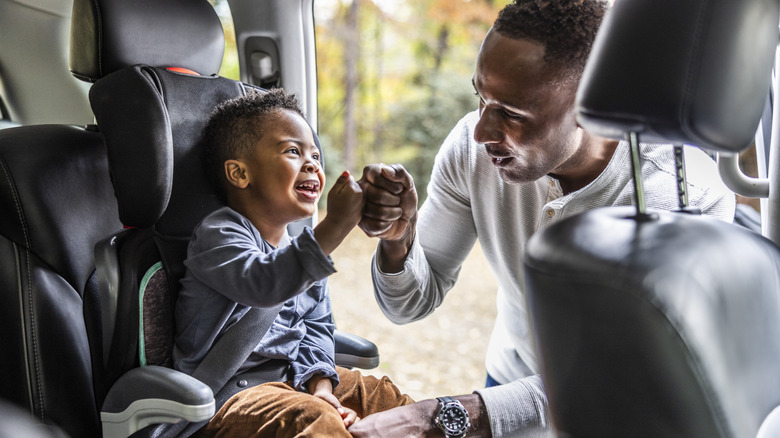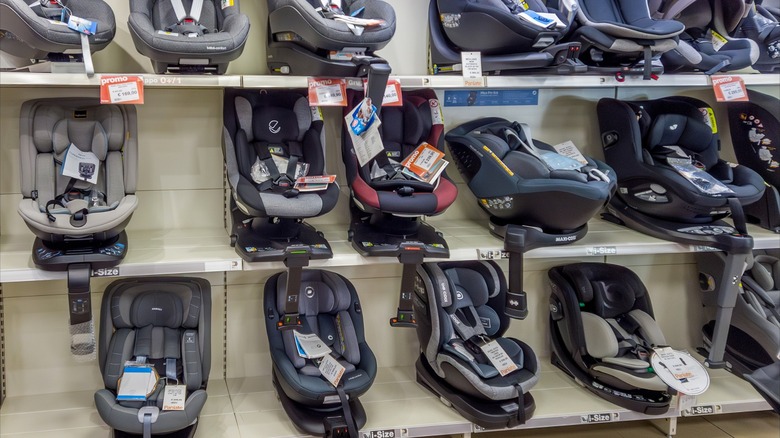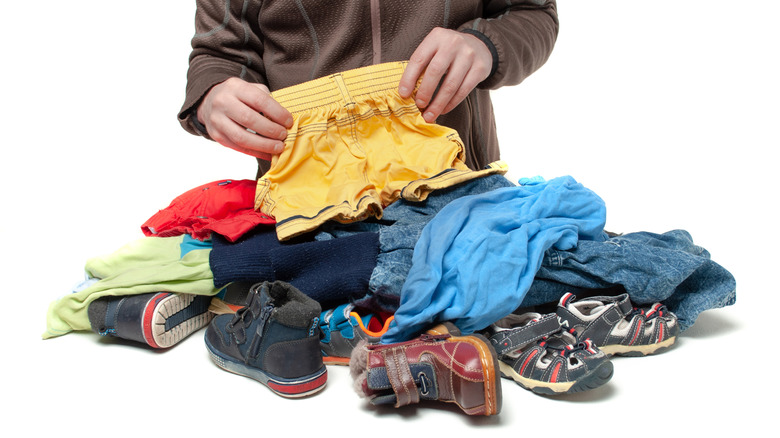Why You Should Avoid Buying A Used Car Seat
There's no sugar-coating it; kids are expensive. According to the USDA, an average middle-class couple that had a baby in 2015, will spend over $233,000 (more if calculating inflation), for a child's needs from infant to age 17. Of course, being a parent is far more than just reaching into your wallet. Nevertheless, saving money along the way isn't a bad idea, which is why some parents consider second-hand products.
New car seats can retail from around $60 up to nearly $4,000. Therefore, it might be tempting to opt for a bargain at a local garage sale, or perhaps something used from an online marketplace. However, this isn't a good idea, as you'll be unaware of the car seat's backstory, hidden damages, whether it's been recalled, and if it's past its expiration date. These are also some of the same reasons you should not rent a car seat with your rental car.
The reality is, car seats save lives and that's not something you want to risk to save a few dollars. According to Traffic Safety Marketing, the risks of a life ending injury in a passenger car when using a car seat drops by 71% for babies, and 54% for kids ages 1 to 4 years old. Although, it's critical you set it up correctly, and there are some things you need to check when installing a car seat.
Are the expensive car seats safer and what should you look for?
With such a wide swing in price, it can be a challenge deciding which car seat to purchase. Fortunately, every car seat must meet government crash and safety criteria. So, while more expensive models might offer extra features, the level of safety provided isn't determined by price. However, as a parent, your little one will take a toll on your vehicle's interior, which is why it's important to know how to clean stains from your car's seats with baking soda.
Some of the premium priced car seats can justify their cost due to being adjustable or convertible. Instead of purchasing a specific seat for the various stages of development to accommodate growing children, some models can transform from an infant configuration (rear facing), to toddler setups which eventually turn front-facing, and finally to a booster seat, all-in-one. It can be an expensive initial investment, but when you add up the cost of multiple car seats versus the all-in-one, it could be the better financial decision.
You should also opt for in-person shopping rather than online when possible, as hands-on experience can help. You can better gauge how well the car seat will fit your vehicle, evaluate how heavy it is, and if it will be manageable to change it back and forth between multiple vehicles. In addition, you can determine which models are easier to work with, avoiding more complex designs that can cause frustration.
Where you can safely save money with second-hand items
While you may want to avoid used car seats, there are a variety of other previously owned items you can safely purchase on a budget. One of the biggest savings can be found with clothes, where you can not only look for cheaper preowned options, but some retail outlets will even offer new baby apparel that's discounted due to imperfections. Besides, tiny humans can grow quickly, leaving those fancier outfits suddenly too small to fit.
Shoes are another item that kids can grow out of so quickly, you're likely to find less expensive preowned options in pristine condition, from places like flea markets, and yard sales. New infant shoes, especially, can be an unnecessary purchase, especially when more elaborate footwear can be replaced with something simple to keep their feet warm.
When children hit school age, and you're seeking out sports or other hobbies for them to try, second-hand can reduce expenses. Buying a brand-new instrument or several pieces of sports equipment can be great, unless it turns out your child doesn't like it. Instead, you can encourage them to try different activities, but find used options, which won't cause you to grimace as much if they decide it's not for them.


